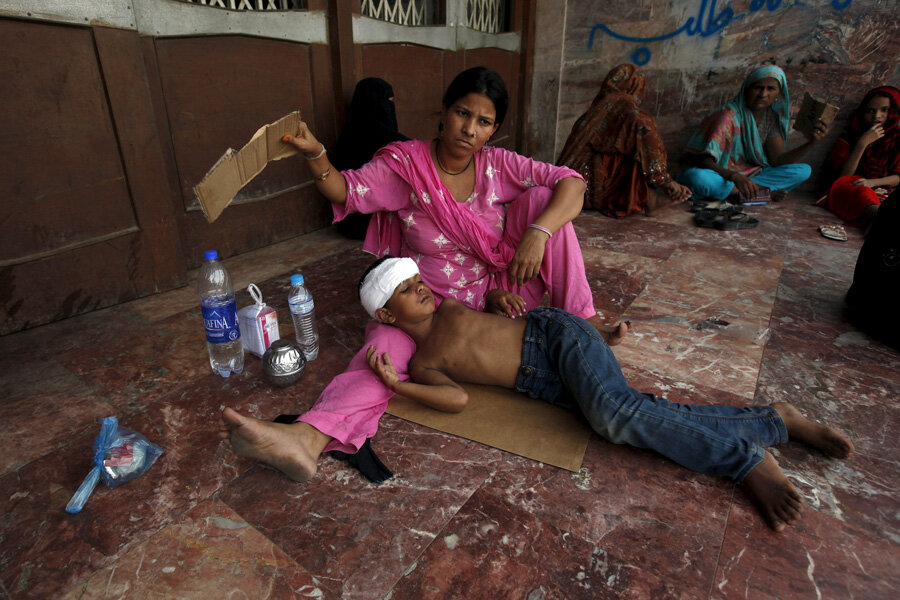How Pakistan is coping with a deadly heat wave
Loading...
Nearly 700 people have died in Pakistan’s southern Sindh province, during a heat wave that has gone on for at least four days.
Saeed Mangnejo, a senior provincial health officer, told Agence France-Presse that the death toll has reached 692 and may rise further.
According to health officials, most of the deaths have been in the port city of Karachi which has experienced temperatures as high as 113 degrees Fahrenheit in recent days.
The national Disaster Management Authority, NDMA, announced in a statement on Tuesday that it had received orders from Pakistan’s prime minister, Nawaz Sharif, to undertake immediate response measures.
NDMA says it is going to establish heat stroke centers at all government and private hospitals and will also direct Provincial Disaster Management Authority in Sindh to activate an emergency helpline.
The army has also been deployed in the past two days to set up heat-stroke centers, the statement added.
Hospitals have been swamped with people suffering from the heat, Al Jazeera reported. Many of the victims are elderly people.
This is not the first time in recent months that the region has been hit a temperature surge. Last month, a weeks-long heat wave killed nearly 1,800 people in India.
American Red Cross suggests preparing for heat waves by listening to local weather forecasts, discussing heat safety precautions with the family, keeping an emergency disaster kit, getting trained in First Aid, and keeping an eye on the elderly, young, sick or overweight neighbors.
The organization also recommends that during the heat wave people stay hydrated, eat smaller portions but more often, avoid extreme temperature changes, stay indoors, and slow down.
During the hot season, people can keep cool by wearing damp clothes, sticking their hands in cold water, placing fans next to windows, taking lukewarm showers and fanning their faces, according to the BBC.
The high temperatures are striking Sindh province as Pakistan is celebrating the Islamic holy month of Ramadan, during which Muslims do not drink or eat from dawn to dusk.
Meanwhile Karachi, a city of 20 million people, is affected by major power cuts, which have crippled the city’s water supply system.
The interruptions in power have led to harsh criticism of the provincial government and K-electric, a private company that supplies electricity to Karachi. Analysts blame the power cuts, that can last up to 10 hours a day, for the number of casualties from heat stroke, the Financial Times reports.
In a statement, K-electric said the water crisis has been an issue for a long time and the company “cannot be held responsible for this persisting situation.” The statement also adds that K-electric is working hard to resolve the electricity problem.
The Pakistan Meteorological Department is expecting temperatures to drop as rain and sea breezes are on the way Wednesday.






